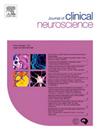Safety of Focused Ultrasound Ablation in Parkinson’s Disease: A Meta-Analysis of Randomized Controlled Trials
IF 1.9
4区 医学
Q3 CLINICAL NEUROLOGY
引用次数: 0
Abstract
Introduction
Magnetic resonance-guided focused ultrasound (MRgFUS) is well-established for the treatment of essential tremor and is emerging as a promising non-incisional treatment for Parkinson’s disease (PD). However, its safety in this context is not well established.
Methods
We performed a systematic review and meta-analysis to evaluate the incidence of adverse events among patients with medication-refractory PD treated with MRgFUS. PubMed, Embase, Scopus, and Cochrane databases were searched from inception until December 2023. Included studies were peer-reviewed randomized controlled trials (RCTs) comparing MRgFUS to sham-procedures among patients with medication-refractory PD.
Results
Three RCTs comprising 161 patients (MRgFUS n = 115) were included. Dizziness was the most reported adverse event associated with MRgFUS (odds ratio [OR] 4.25; 95 % confidence interval [CI] 1.23–14.64; p = 0.02; I2 = 0 %). Pin-site complications (OR 0.52; 95 % CI 0.23–1.20; I2 = 0 %) and headache (OR 0.88; 95 % CI 0.19–4.16; I2 = 48 %) were also notable. Ablation-related adverse events included gait disturbances (OR 4.53; 95 % CI 0.79–26.07; p = 0.09; I2 = 0 %) and facial disturbances (OR 2.93; 95 % CI 0.49–17.51). No significant between-group differences were observed for life-threatening events (OR 1.76, 95 % CI 0.55–5.65; p = 0.35; I2 = 0 %).
Conclusion
MRgFUS demonstrated a reasonable safety profile for the treatment of patients with medication-refractory PD. This promising safety profile, combined with its non-incisional nature, supports its potential as a valuable tool for managing refractory PD.
求助全文
约1分钟内获得全文
求助全文
来源期刊

Journal of Clinical Neuroscience
医学-临床神经学
CiteScore
4.50
自引率
0.00%
发文量
402
审稿时长
40 days
期刊介绍:
This International journal, Journal of Clinical Neuroscience, publishes articles on clinical neurosurgery and neurology and the related neurosciences such as neuro-pathology, neuro-radiology, neuro-ophthalmology and neuro-physiology.
The journal has a broad International perspective, and emphasises the advances occurring in Asia, the Pacific Rim region, Europe and North America. The Journal acts as a focus for publication of major clinical and laboratory research, as well as publishing solicited manuscripts on specific subjects from experts, case reports and other information of interest to clinicians working in the clinical neurosciences.
 求助内容:
求助内容: 应助结果提醒方式:
应助结果提醒方式:


